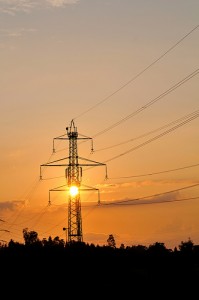You may have heard of Economy 7 electricity, or Dual Rate, but what is it? How do you know if you have it? And what good is it if you do have it?
This article will help you with some of your queries on the subject.
Dual Rate electric (also known as Economy 7)
 It is where you have two different tariffs for electricity within the property. One rate is a standard day rate and the other is a much cheaper overnight rate. It was mainly designed so that properties that mainly relied on electric storage heaters could be run overnight when it was cheaper and store the heat energy for release during the day. Even today in modern buildings with electric heating it is normal practice to install Dual Electricity meters. However, you do still find Dual Electric meters on some non electric heating properties. This is normally because in the past the property was electrically heated and has changed, or that it might have been a local authority property that installed them as standard at construction.
It is where you have two different tariffs for electricity within the property. One rate is a standard day rate and the other is a much cheaper overnight rate. It was mainly designed so that properties that mainly relied on electric storage heaters could be run overnight when it was cheaper and store the heat energy for release during the day. Even today in modern buildings with electric heating it is normal practice to install Dual Electricity meters. However, you do still find Dual Electric meters on some non electric heating properties. This is normally because in the past the property was electrically heated and has changed, or that it might have been a local authority property that installed them as standard at construction.
How do you know if you have Dual Rate? Well, the simplest method is to either ring your electricity supplier and check, or to review your utility bills where the different tariff rates would be outlined. However, you should also be able to find out from the electricity meter too.
If you look at your meter and there is only a single meter reading for usage, then it is likely to be a single electric rate for the property. If you have a digital display and a button along side, then pressing the button will cycle through the rates for the property. If there is only one rate for usage displayed, it is likely to be a single electric rate, if it shows two rates, then Dual Rate. Sounds simple and it is!
However, don’t be fooled to thinking that a pay electricity meter with an emergency credit function is a Dual Rate meter. This is only an emergency credit function that happens when you run out of normal credit and go into temporary arrears until you can top up again. This is not Dual Rate and you might even be charged higher for being in emergency credit!
So once you have found out that you have Dual Rate electricity what’s the benefit? Well, very simply it is about managing your household appliances to make the best use of the lowest rate of electricity over night. Remember, the rate was designed for storage heaters over night, so set your own appliances to work then too.
For example, why not run your dishwasher or washing machines at night on Dual Rate? Or even mobile phone chargers? If you are sensible you can even use timers to ensure that the appliances switch on and off during this time only. If you have an electric immersion, you might well want to set the heating timers for hot water during this period too.
By using the Dual Rate system properly you can really save yourself some money on your electricity bills!
Written by Symon Silvester
Photo by Tambako the Jaguar
Hi
What you’ve crucially failed to mention is that the “normal” day rate for 17 hours normally from 7am to 12pm is actually a premium rate and can be substantially higher than the normal single rate for 24 hours.
With gas or oil central heating and using economy 7 putting the dishwasher or washing machine helps to level the premium rates out but isn’t going to give you a great profit over a standard single rate.
For the majority of households it’s my belief that economy 7 tariffs are a silent scam based on the beliefs of the 1970s and cost householders £millions of excess electricity costs!
The government/Ofgem should order all Utility Companies supplying economy 7 tariffs be reviewed on current usage to protect the consumer!
I have worked out I would save if I came off dual rate (I only have gas heating). But how do I come off it?
I simply examine the article on dual-rate electrical energy on Housing Energy Advisor, and I desired to drop a rapid remark to specific my appreciation. The clarification used to be clear and concise, making it handy for me to recognize the concept. Dual-rate electrical energy is such an vital theme for these searching to keep on power charges and limit their environmental impact. Thanks to the creator for shedding mild on this subject!